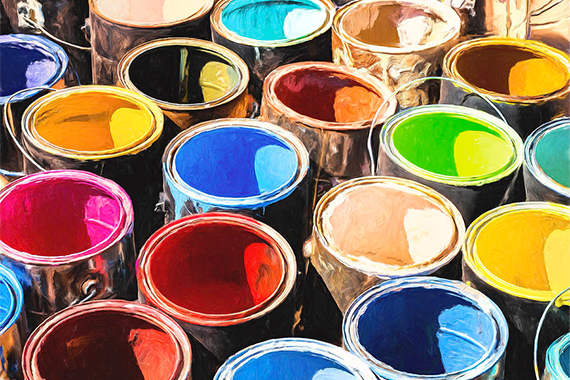More news
- New Managing Director of BASF’s Coatings division
- Global New Material International (GNMI) to acquire Merck’s Surface Solutions busine...
- Delta Coatings unveils plans for global eco-friendly HQ and plant
- PPG recognised for sustainability progress by FTSE4Good for sixth consecutive year
- ChemQuest expands Business Development team, names four VPs

A new study on lead in decorative paints in Indonesia released today by Nexus3 Foundation finds that about three-quarters of the analysed paint samples would not comply with a globally achievable standard of 90 parts per million (ppm). Bright colour paints with high lead content are used widely in children’s facilities and public spaces.
"Bright colours are good for children to stimulate their brains. However, paints with bright colours and high lead concentration will damage their brains. The health impacts of lead exposure on young children’s brains are lifelong, irreversible and untreatable,” said Yuyun Ismawati, Senior Advisor of Nexus3 Foundation. "Companies should stop arguing that there is a strong demand for cheap bright colours. It is unethical to make profits by risking our children’s future with lead paints. Fortunately, some paint manufacturers in Indonesia are beginning to remove lead from their paint, which demonstrates that the technology exists in Indonesia to produce lead-safe paints.”
In 2020-2021, The Nexus3 team randomly sampled 120 cans of solvent-based paints and industrial paints sold for home use from stores in 10 cities in Indonesia. The paints represented 66 different brands produced by 47 manufacturers.
The analytical study providing data to this report was undertaken as part of IPEN´s Global Lead Paint Elimination Campaign. It was conducted in Indonesia by Nexus3 Foundation in partnership with IPEN (International Pollutants Elimination Network) and funded by GiveWell, and the Swedish Government.
Key findings of the 2021 study include:
- 88 out of 120 analysed paints for home use and industrial purposes (73%) were lead paints, i.e., they contained lead concentrations above 90 parts per million (ppm, of dry weight paint);
- 47 paints (39%) contained extremely high lead concentrations above 10,000 ppm. The highest lead concentrations detected were 250,000ppm in a yellow road-line industrial paint and 150,000ppm in a yellow decorative paint sold for home use;
- 23 out of 101 solvent-based paints for home use (23%) contained lead concentrations at or below 90ppm, suggesting that the technology to produce paint without lead ingredients exists in Indonesia;
- Two paints from Primatan brand contained 12,000ppm and 8900ppm lead levels despite having a "no added lead” claim on its labels; and
- The most dangerous levels of lead tended to be in orange (91%), yellow (59%), green (57%), and red (20%) coloured paints.
There is currently no legally binding regulation that prohibits the use of lead in paint in Indonesia. While existing standards in Indonesia specify a 600ppm maximum limit in organic solvent-based decorative paint, this is currently in the process of review to lower the limit to 90ppm by the end of the year.
However, this standard is not mandatory, and a regulation that will establish a maximum total lead content of 90ppm in all types of paints, including decorative, architectural, and industrial paints, is needed to be established to protect human health.
"Globally, we are now seeing an increasing number of countries that have started the process of developing strong regulatory controls to ban use of lead in all types of paint to protect their children. We join Nexus3 in urging the Government of Indonesia to adopt and publish strong legally binding limits on lead in paint. In addition, it is important that paints are subjected to independent lead content certifications to ensure that paints labeled "lead free” or "no added lead” do not contain high levels of lead as seen in this study,” said Jeiel Guarino, Global Lead Paint Elimination Campaigner, IPEN.
According to the World Health Organization (WHO), lead has no essential role in the human body, and lead poisoning accounts for about 0.6% of the global burden of disease. Evidence of reduced intelligence caused by childhood exposure to lead has led WHO to list "lead-caused mental retardation” as a recognised disease.
Children, ages 0-6, engaging in normal hand-to-mouth behaviours are the most at risk of damage to their intelligence and mental development from exposure to lead dust and soil. In Indonesia, there are 33M children at golden age at risk of lead exposure from bright colour paints.
Lead paint is a significant source of childhood lead exposure. The term lead paint is used in this report to describe any paint to which one or more lead compounds have been added. The cut-off concentration for lead paint used in the report is 90 parts per million (ppm, dry weight of paint), the strictest legal limit enacted globally today.
Nexus3 and IPEN recommend the following actions to continue the efforts to protect Indonesia children from lead exposure:



